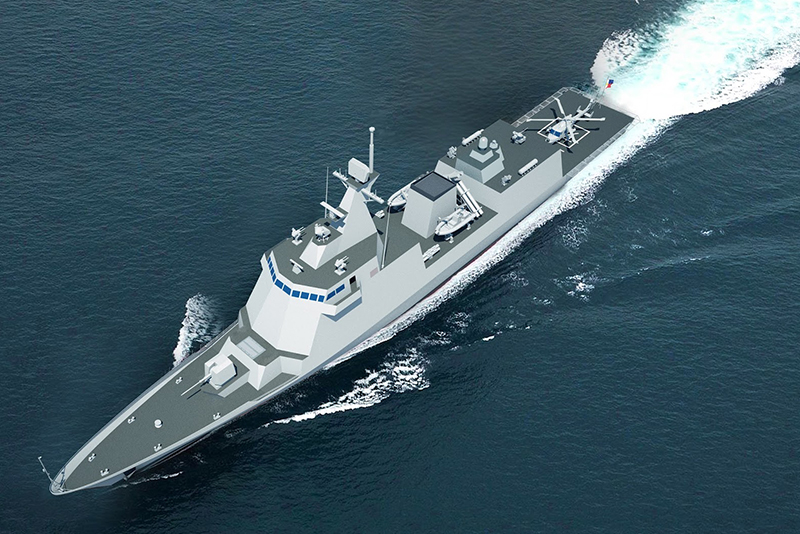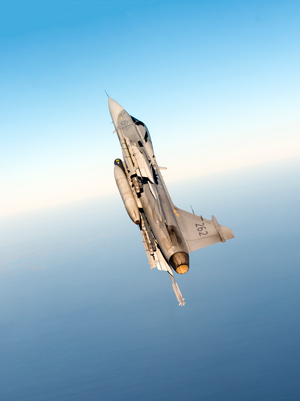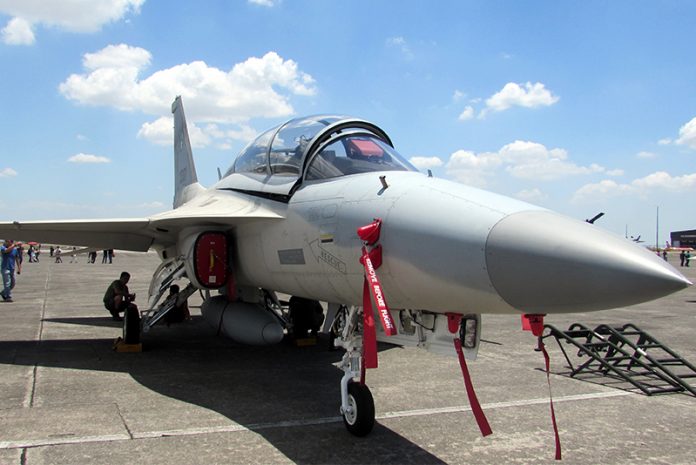Andrew Drwiega – The second five year plan in the ambitious 15 year Philippine armed forces modernisation strategy is moving beyond counter-insurgency and onto ‘big-ticket’ assets.
The Armed Forces of the Philippines (AFP), never cash-rich at the best of times, is nevertheless progressing through a modernisation programme which, importantly, has the support and encouragement of President Rodrigo Duterte according to Major General Restituto Padilla, AFP deputy chief-of-staff. Modernisation has been an growing necessity for many years in order to renew old and obsolete naval vessels, military aircraft and army equipment, some of which dates back to the World War Two era.
However to date the overall focus on defence has been split between the ongoing requirement to conduct internal security and counter insurgency (COIN) operations, and the growing need to protect the Philippines territorially from foreign incursions particularly by the Chinese People’s Liberation Army Navy (PLAN).

The Philippine government has, for several decades, battled against communist rebels and, more recently, jihadist groups. This conflict gained worldwide attention in May 2017 as the army fought a five month long battle for the city of Marawi, parts of which had been overrun by insurgents sympathetic to Daesh.
Unsurprisingly the first modernisation phase, from 2013-2017, largely focused on arms and equipment for internal security operations to bolster the army’s capacity to take on the well equipped insurgent groups.
On to Horizon 2
According Philippine Department of National Defense spokesman Arsenio Andolong, $5.6 billion (PHP300 billion) was allocated to the second of three five-year modernisation phases, Horizon 2, which runs from 2018 to 2022.
With extensive modernisation still required to much of the force, the Horizon 2 focus will see the majority of the budget being allocated to the Philippine Air Force (PAF) for more fighters, improved airlift and maritime helicopters while the Philippine Navy (PN) will gain new corvettes and a range of offshore patrol vessels (OPVs), in addition to well publicised but not precisely defined new submarine capability.
The Army’s wish list includes heavier equipment including self-propelled artillery, multiple rocket launchers, light tanks and other general purpose vehicles.
Renato Cruz de Castro, professor in the International Studies Department, De La Salle University, Manila, writing for the Center for Strategic and International Studies (CSIS) notes that the ‘big-ticket’ items that the AFP will fund include “two more missile-capable frigates (two are currently being constructed by Hyundai Shipbuilding Corporation and will be delivered in 2020), amphibious assault vehicles, anti-submarine helicopters, multi-role vessels, and submarines.”

The two ‘semi-stealth’ future frigates based on the HDF-3000 Inchon design will weight 2,600 tons and are now under contract for construction. General Padilla commented earlier that the “keel-laying ceremony for our frigate’ had occurred on 16 October and that the first frigate was likely to be delivered in early 2020, followed by the second later in the year.
Philippine Air Force (PAF)
One of the biggest acquisitions planned by the PAF concerns the Multi-Role Fighter (MRF) programme. The PAF is looking for two squadrons worth of multi-role aircraft. Although a formal Request for Information (RfI) has not yet been issued, one of the leading contenders appears to be Saab’s Gripen C/D (single/dual seat) aircraft which could be fitted to carry a wide range of weaponry.

Magnus Hagman, campaign director Gripen and airborne systems recently admitted that Saab has been in discussions with the Philippine government for “several years where they have agreed the the Gripen C/D version with the latest software release, MS20 and the [PS-05/A fighter] Mk4 radar.” The MS20 software package is the last for the Gripen C/D as it is “designed as a basic package with a number of optional add-ons to allow it to be customised.”
The Mk4 radar, according to Saab literature “gives significantly improved radar performance and operational range, enhances the Gripen Weapon System capabilities and offers full AMRAAM and Meteor integration. It also enables significant capability growth through software upgrades to successfully counter evolving threats in decades to come.”
The government has already committed to the KAI T-50 as a light attack and lead-in fighter trainer. An initial 12 FA-50PH fighters are already in service and have been used in action against insurgent groups. Their successful deployment has sparked a stated requirement for a further 12 FA-50PHs which will be afforded within the Horizon 2 budget.
Philippine Air Force (PAF) has recently procured three Airbus C295 transport aircraft. An additional aircraft is also believed to have been ordered which will serve as a more specialised command and control platform for the Philippine Armed Forces.
A $233 million contract for 16 Bell 412EPI helicopters for the PAF was cancelled by the Canadian government over human rights concerns relating to President Duterte and his government.
Philippine Navy (PN)
The decision to acquire diesel-electric submarines is still being deliberated as the PN does not have experience of modern submarine operations. This is a decision perhaps borne out of strategic pressure with so many countries in the region acquiring this maritime capability.
“The acquisition of submarines was originally planned for the third horizon (2023-2028). But the current navy chief, Vice Admiral Robert Empedrad, lobbied for the immediate inclusion of diesel-electric submarines in Horizon Two, stated Professor Castro.
Notably the Royal Thai Navy signed a contract with the China Shipbuilding Industry Corporation (CSIC) in May 2017 for an S26T diesel-electric submarine which will be delivered by 2023. The Navy intended this initial order to be followed by an additional order for three more S26T boats (derivatives of the PLAN’s Type 039B Yuan-class) but this plan has currently been shelved due to reported opposition to the purchase within Thailand.
At a briefing in late October, General Padilla stated that the submarine acquisition would be a “very long term development, it is not something that we can get off the shelf, it is a capability that needs to be slowly, deliberately [built] and in consultation with our allies, the United States included.”
In March 2016 Leonardo was selected to provide the PN with two AW 159 Wildcat helicopters together with training and multi-year support packages in a $113 million contract. Flight trails on the first aircraft have been conducted at Leonardo’s Yeovil facility during the latter months of 2018. Both helicopters are expected to be delivered to the PH during early 2019.
These anti-submarine warfare (ASW) are likely to be configured with active dipping sonar (ADS), sonobuoys, and torpedoes, with alternative weaponry including anti-ship missiles and rockets giving them an anti-surface warfare (ASuW) role as well.
In July, PN flag-officer-in-command Vice Admiral Robert Empedrad stated that the new helicopter capability would be used to strategically reinforce the defence of the Philippines, and may be tasked to work in the future with additional frigates/corvettes in the second and third parts of the modernisation plan.
In October 2018, the Philippine Marine Corps (PMC) through the PN, issued an Invitation to Bid (ITB) for 16 fibreglass speedboats. This has set out to be a rapid acquisition with the analysis of bids set for the end of November. Ninety days from Notice to Procure (NTP), the first batch of eight craft should be delivered followed by the remaining eight at the end of the following 90 days.
The PMC also has on its shopping list new amphibious assault vehicles. With the United States Marne Corps (USMC) handing BAE Systems a $198 million contract for an initial 30 Amphibious Combat Vehicles (ACV) to become its new amphibious assault capability (with options for a further 204 vehicles), the PMC may decide to follow this decision.

Philippine Army
The Army’s equipment wish-list during Horizon 2 includes both towed and self-propelled howitzers, multiple launch rocket systems, armoured recovery vehicles, and general support vehicles in terms of heavy equipment. For the infantry there is a need for new tactical radios, ground mobility equipment (light, medium, heavy), individual weapons, crew-served weapons, and night vision goggles.
Beyond that, and perhaps more longer term, heavy lift helicopters and unmanned aerial vehicles (UAVs) would bolster the tactical air support picture. Other more specialist requirements include improvised explosive device (IED) detection and disposal, improved medical facilities and equipment and more specialist force protection kit.













